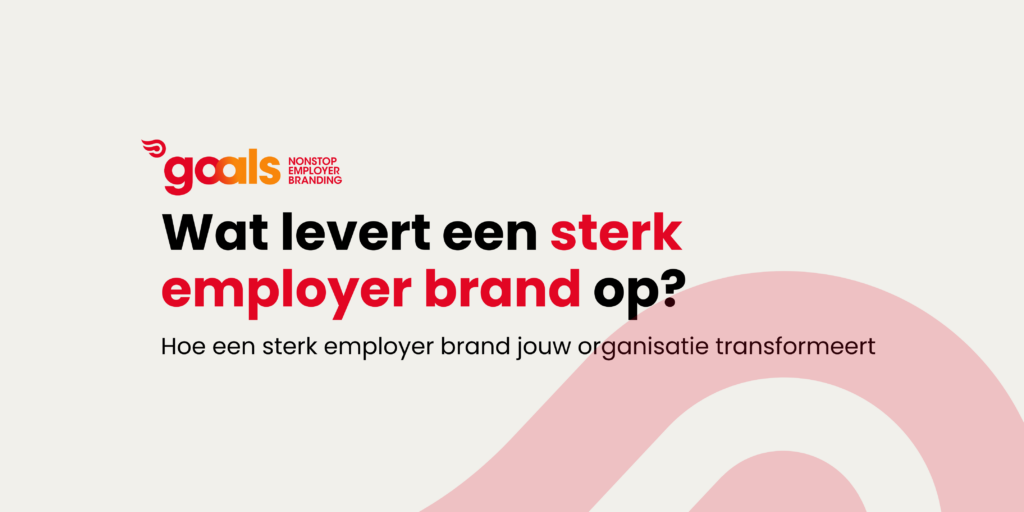The importance of employee engagement
Happy and motivated employees are of great value to an organisation. Motivated employees who are committed to the organisation are sustainably employable and often also act as a magnet for attracting other talent. They enjoy working and are willing to give their best. And that creates more success in the long run, for the talent itself, for the customer/patient and for the organisation. Internal communication plays an important role in this.
The role of (internal) communication
Your employees become engaged and inspired when their talents and passions coincide with your company's ambitions and goals. Here, communication is the lubricant that connects all factors. It removes unfamiliarity, ambiguity and uncertainty. And that's a good thing. In addition, it can encourage dialogue between employer, manager and employee. This all sounds good, but in practice it often proves difficult. Communication, like HR, is a profession in its own right.
The role of executives
Did you know that executives spend as much as one to two-thirds of their time interacting and exchanging information? Not surprisingly, they are of enormous importance in shaping the organisation's communication climate. Unfortunately, this does not always go well. Time and again, research shows that (a lack of) communication and feedback by managers is one of the biggest barriers to employee engagement. Research shows:
- 33% of employees have a manager who rarely or never discusses growth and development opportunities;
- 30% says it rarely, if ever, gets feedback on performance;
- 25% feel that their manager never makes them feel like their work matters.
Similar results are seen in a survey by Effectory:
- 46.8% of employees are not kept informed by the organisation about developments and changes affecting the organisation;
- 37.9% of those surveyed indicated that managers do not share important issues at play with them;
- 35.5% of employees say they are not aware of the organisation's goals.
The 3 layers of communication for higher employee engagement
Communication plays a role in improving employee engagement in several ways.
1. At the organisational level
Increasing employee commitment to the organisation by:
- Creating an 'engaging' culture and communication climate;
- Communication of desired culture, norms and values;
- Carrying out the organisation's inspirational purpose;
- Communication of organisational changes such as policies, new staff, systems and processes;
- Communication of key figures, such as results and satisfaction.
2. At management level
A manager depends on the expertise and commitment of his employees. A good relationship is therefore a prerequisite for good management. Managers who are aware of the impact of their communication attitude are most successful. Communication plays an important role in this:
- Passionately communicate vision, goals and the inspiring purpose of the organisation, supporting the CEO/general manager and management;
- Coaching and training of line managers in their communication skills (open participatory communication, feedback, recognition, appreciation, attention to social relations).
3. At employee level
Improving employee engagement among themselves and enabling and encouraging employees to show their commitment.
- Create channels and moments for dialogue;
- Actively encourage and enable feedback;
- Encourage communication between departments;
- Facilitate participation and thus enable influence.
Causes of miscommunication
Because communication is under the influence of various factors, things often go wrong 'along the way': information is selective or provided with its own interpretation. Or worse: the flow of information falters because managers neglect to pass on information in work or departmental consultations. The organisational structure can also be a cause; if it is not clear or logical, noise can arise. For example, when an employee works in a department and in a project group and is not informed by anyone, because both department manager and project leader assume that the other will inform the employee.
But technology also sometimes gets in the way of good communication. For example, internal communication tools are inadequate or incorrectly implemented, or information cannot be found on an overloaded intranet. And even when a message does reach the employee, things can go wrong if the message is not understood. Increasingly, messages are also not read, due to information overload, lack of time or simply disinterest.
Determine the optimal communication strategy
We advise organisations to research the effectiveness of their internal communication and communication channels. Once you have that information and analyse it properly, you can identify your ideal employee touchpoints. And translate these into an appropriate communication and resource strategy. Of course, you take into account the needs of different employee target groups. We call this form of research: IC360. This is because we collect the input for your ideal communication strategy from employees and you then translate this into a concrete policy.



